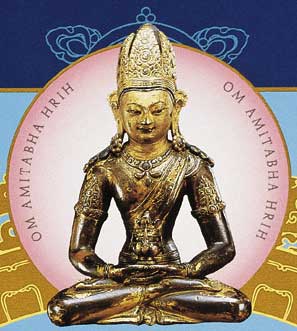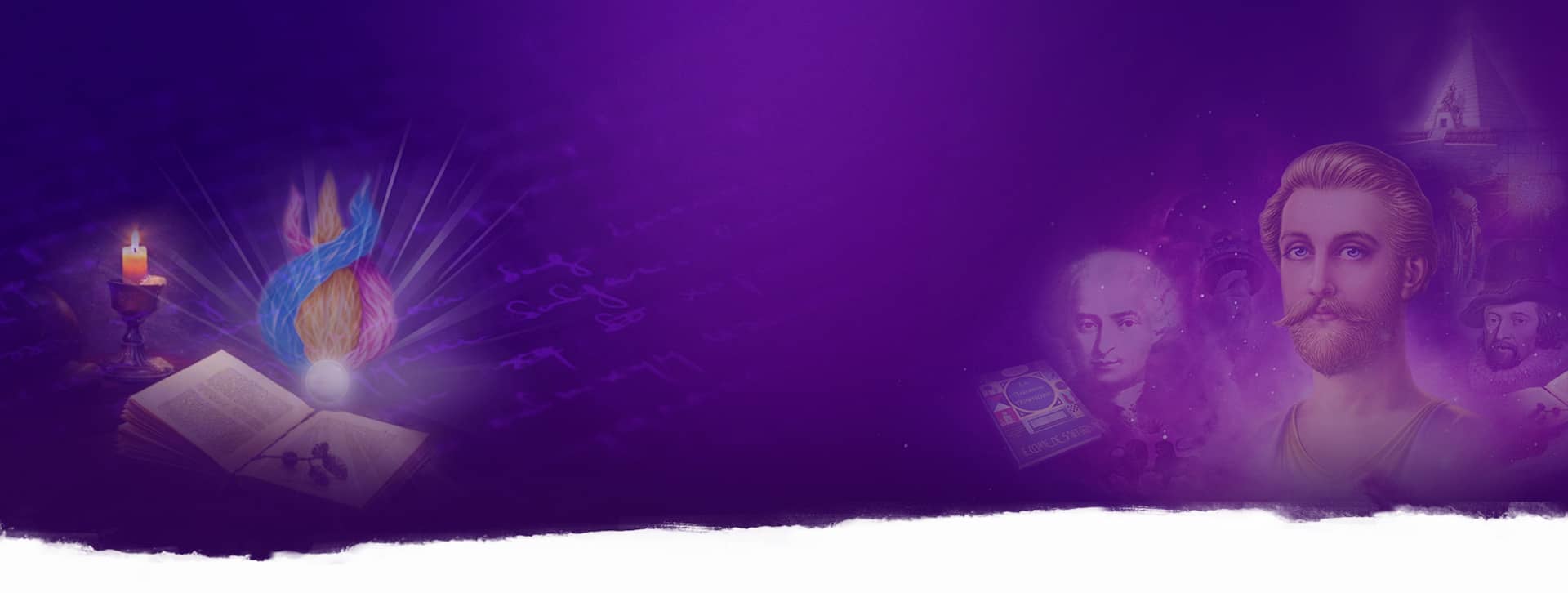The name Amitabha means “Infinite Light.” Amitabha's Discriminating Wisdom conquers the poison of the passions — all cravings, covetousness, greed and lust. With this wisdom, the disciple discerns all beings separately yet knows every being as an individual expression of the One.
In the mandala of the Dhyani Buddhas, Amitabha is positioned to the west. His color is rose, the color of the setting sun. He rules over the element of fire and personifies the skandha of perception. Thus, the eye and the faculty of seeing are associated with Amitabha. The peacock, with “eyes” on its plumes, is his throne-bearer. The peacock symbolizes grace.
 Amitabha’s symbol is the padma, or lotus.
Amitabha’s symbol is the padma, or lotus.
In Buddhism, the lotus can symbolize many things, including spiritual unfoldment, purity, the true nature of beings realized through enlightenment, and compassion, the purified form of passion.
Amitabha and the Western Paradise
Devotees aspire to be reborn in Amitabha's Western Paradise, known as Sukhavati, where conditions are ideal for attaining enlightenment.
His mudra is the dhyana (meditation) mudra. (Hands rest in the lap, palms up, with the right hand on top of the left.) Amitabha’s bija is Hrih and his mantra is Om Amitabha Hrih.
Some consider Amitabha to be synonymous with Amitayus, the Buddha of Infinite Life. Others honor Amitayus as a form of Amitabha or as a separate Buddha. Amitayus is usually depicted holding a vessel of the elixir of immortal life. A tiny ashoka-tree often sprouts from the cover of his vessel, representing the union of the spiritual and the material.



Sorry, comments are closed for this post.